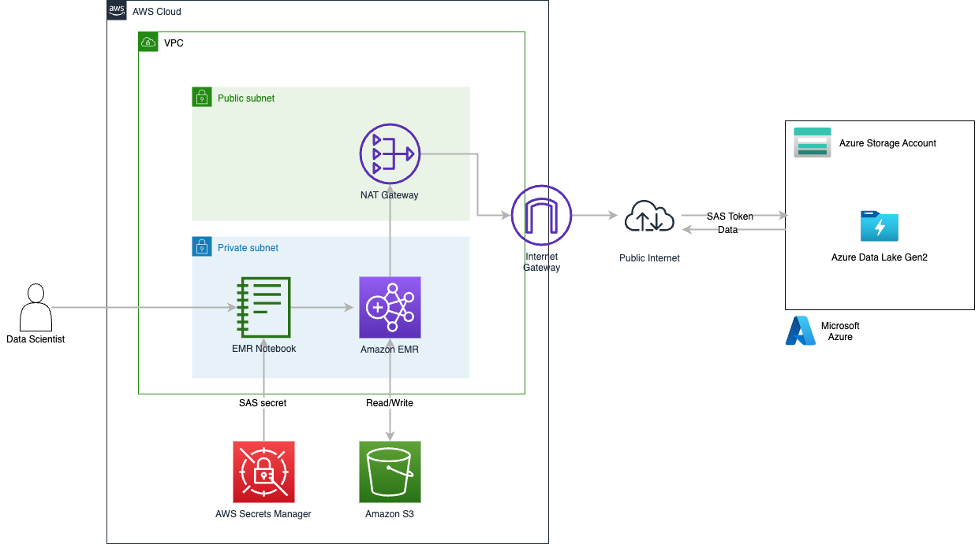AWS Big Data Blog
Category: *Post Types
Amazon OpenSearch Service’s vector database capabilities explained
Using Amazon OpenSearch Service’s vector database capabilities, you can implement semantic search, Retrieval Augmented Generation (RAG) with LLMs, recommendation engines, and search in rich media. Learn how.
Stream VPC Flow Logs to Datadog via Amazon Kinesis Data Firehose
February 9, 2024: Amazon Kinesis Data Firehose has been renamed to Amazon Data Firehose. Read the AWS What’s New post to learn more. It’s common to store the logs generated by customer’s applications and services in various tools. These logs are important for compliance, audits, troubleshooting, security incident responses, meeting security policies, and many other […]
Multi-tenancy Apache Kafka clusters in Amazon MSK with IAM access control and Kafka Quotas – Part 1
With Amazon Managed Streaming for Apache Kafka (Amazon MSK), you can build and run applications that use Apache Kafka to process streaming data. To process streaming data, organizations either use multiple Kafka clusters based on their application groupings, usage scenarios, compliance requirements, and other factors, or a dedicated Kafka cluster for the entire organization. It […]
Multi-tenancy Apache Kafka clusters in Amazon MSK with IAM access control and Kafka quotas – Part 2
Kafka quotas are integral to multi-tenant Kafka clusters. They prevent Kafka cluster performance from being negatively affected by poorly behaved applications overconsuming cluster resources. Furthermore, they enable the central streaming data platform to be operated as a multi-tenant platform and used by downstream and upstream applications across multiple business lines. Kafka supports two types of quotas: […]
Optimize queries using dataset parameters in Amazon QuickSight
Amazon QuickSight powers data-driven organizations with unified business intelligence (BI) at hyperscale. With QuickSight, all users can meet varying analytic needs from the same source of truth through modern interactive dashboards, paginated reports, embedded analytics and natural language queries. We have introduced dataset parameters, a new kind of parameter in QuickSight that can help you […]
Best practices for enabling business users to answer questions about data using natural language in Amazon QuickSight
In this post, we explain how you can enable business users to ask and answer questions about data using their everyday business language by using the Amazon QuickSight natural language query function, Amazon QuickSight Q. QuickSight is a unified BI service providing modern interactive dashboards, natural language querying, paginated reports, machine learning (ML) insights, and […]
Enable data collaboration among public health agencies with AWS Clean Rooms – Part 1
In this post, we show how you can use AWS Clean Rooms to enable data collaboration between public health agencies. Public health governmental agencies need to understand trends related to a variety of health conditions and care across populations in order to create policies and treatments with the goal of improving the well-being of the […]
Enable remote reads from Azure ADLS with SAS tokens using Spark in Amazon EMR
Organizations use data from many sources to understand, analyze, and grow their business. These data sources are often spread across various public cloud providers. Enterprises may also expand their footprint by mergers and acquisitions, and during such events they often end up with data spread across different public cloud providers. These scenarios can create the […]
AWS Professional Services scales by improving performance and democratizing data with Amazon QuickSight
The AWS Professional Services (ProServe) Insights team builds global operational data products that serve over 8,000 users within Amazon. Our team was formed in 2019 as an informal group of four analysts who supported ad hoc analysis for a division of ProServe consultants. ProServe is responsible for assisting enterprises as they shift to the cloud […]
Best practices for running production workloads using Amazon MSK tiered storage
In the second post of the series, we discussed some core concepts of the Amazon Managed Streaming for Apache Kafka (Amazon MSK) tiered storage feature and explained how read and write operations work in a tiered storage enabled cluster. This post focuses on how to properly size your MSK tiered storage cluster, which metrics to […]









